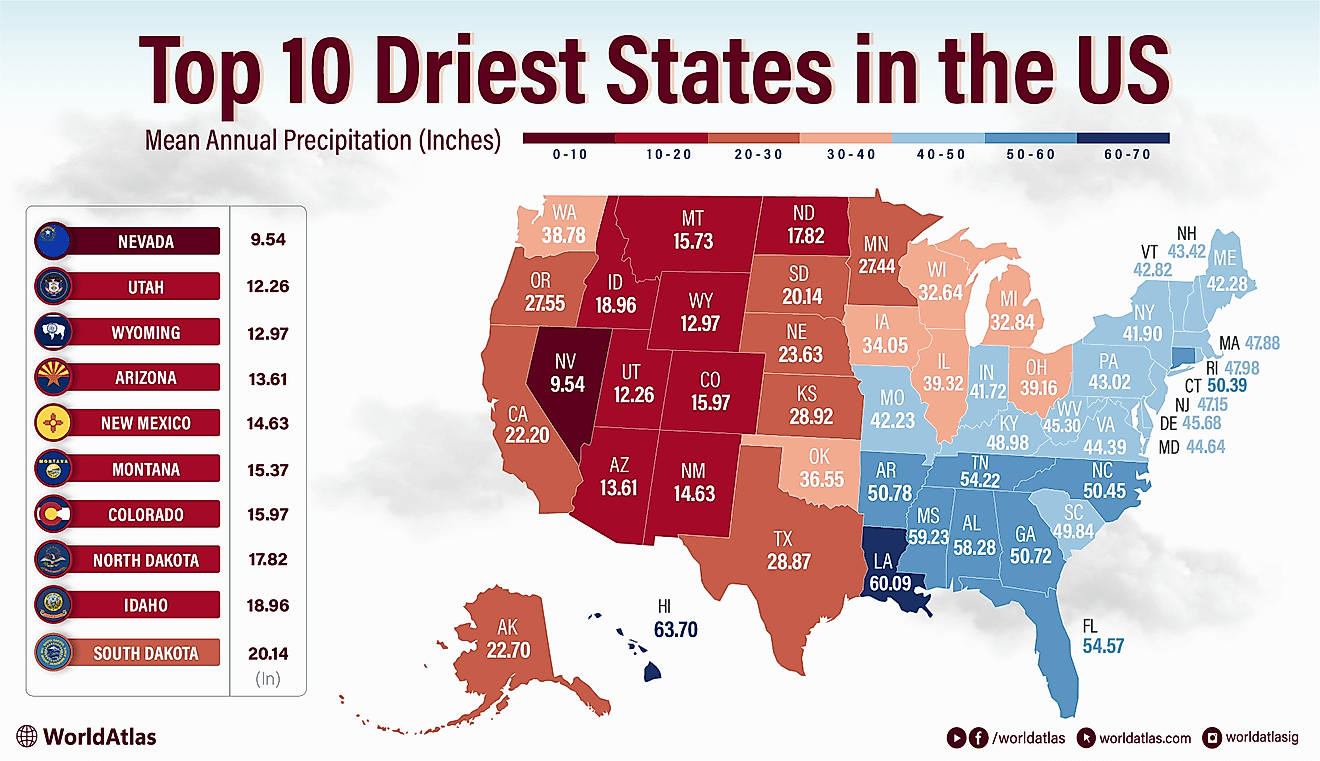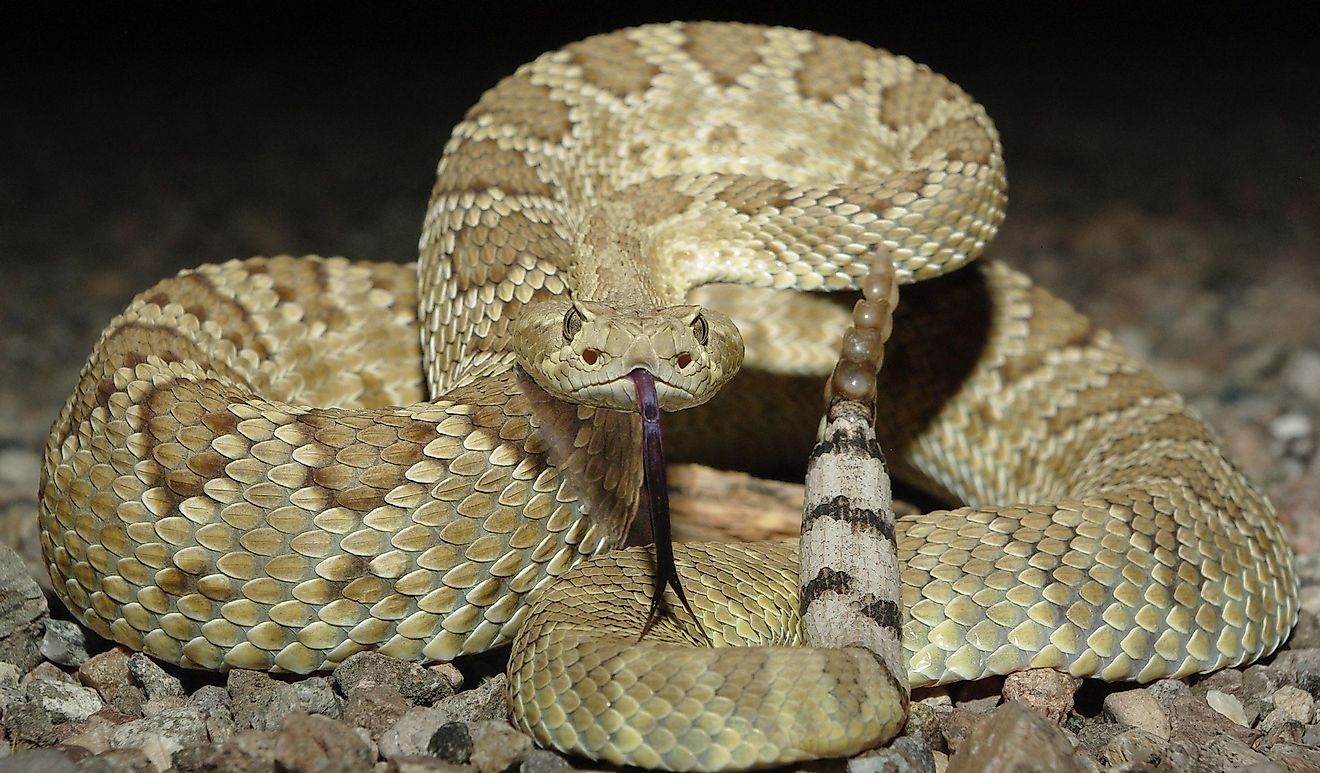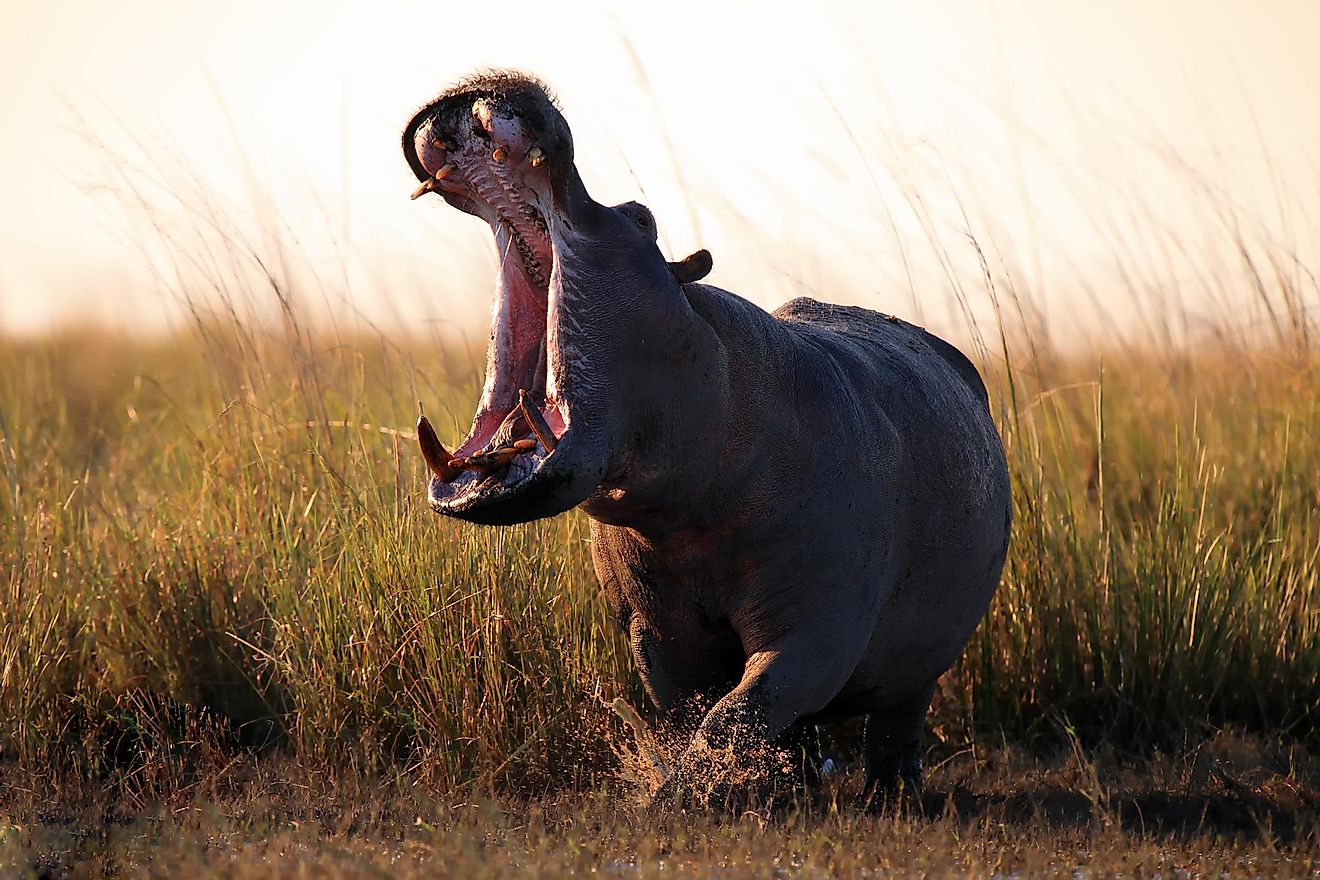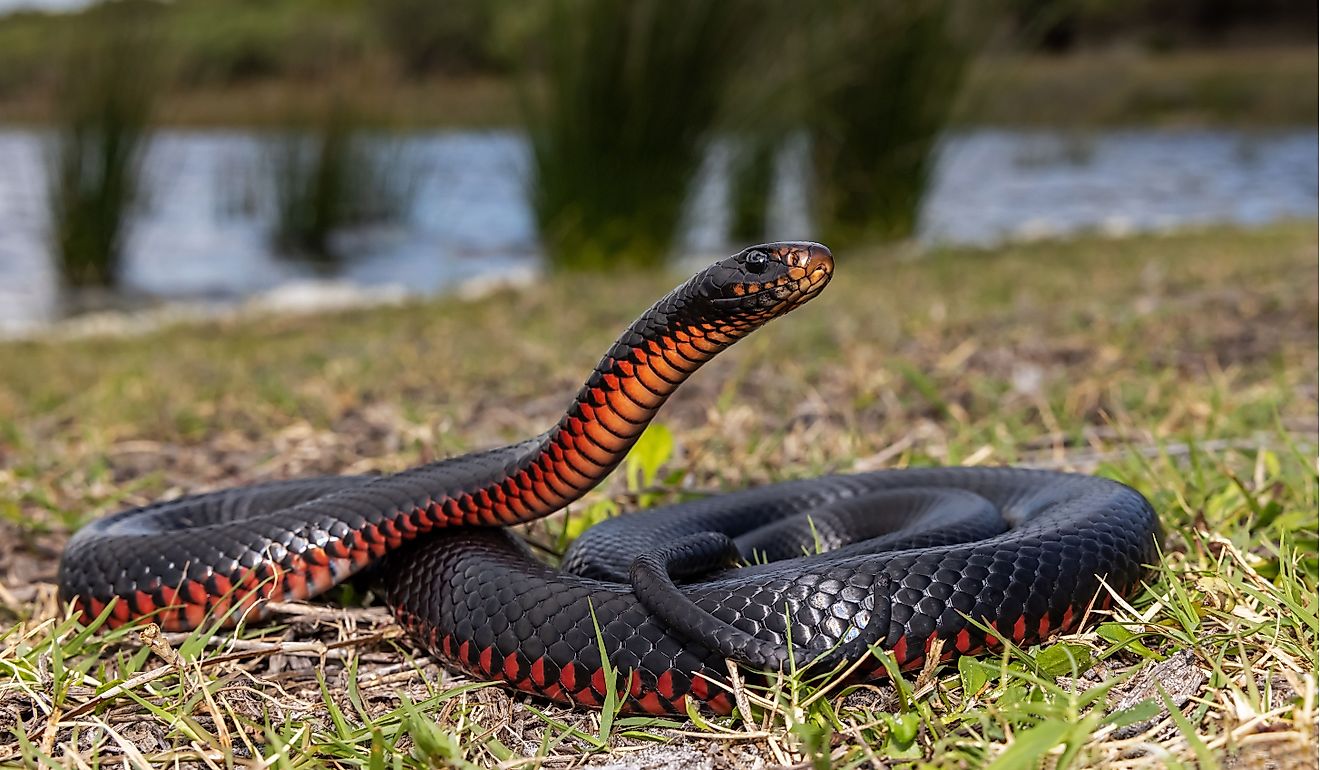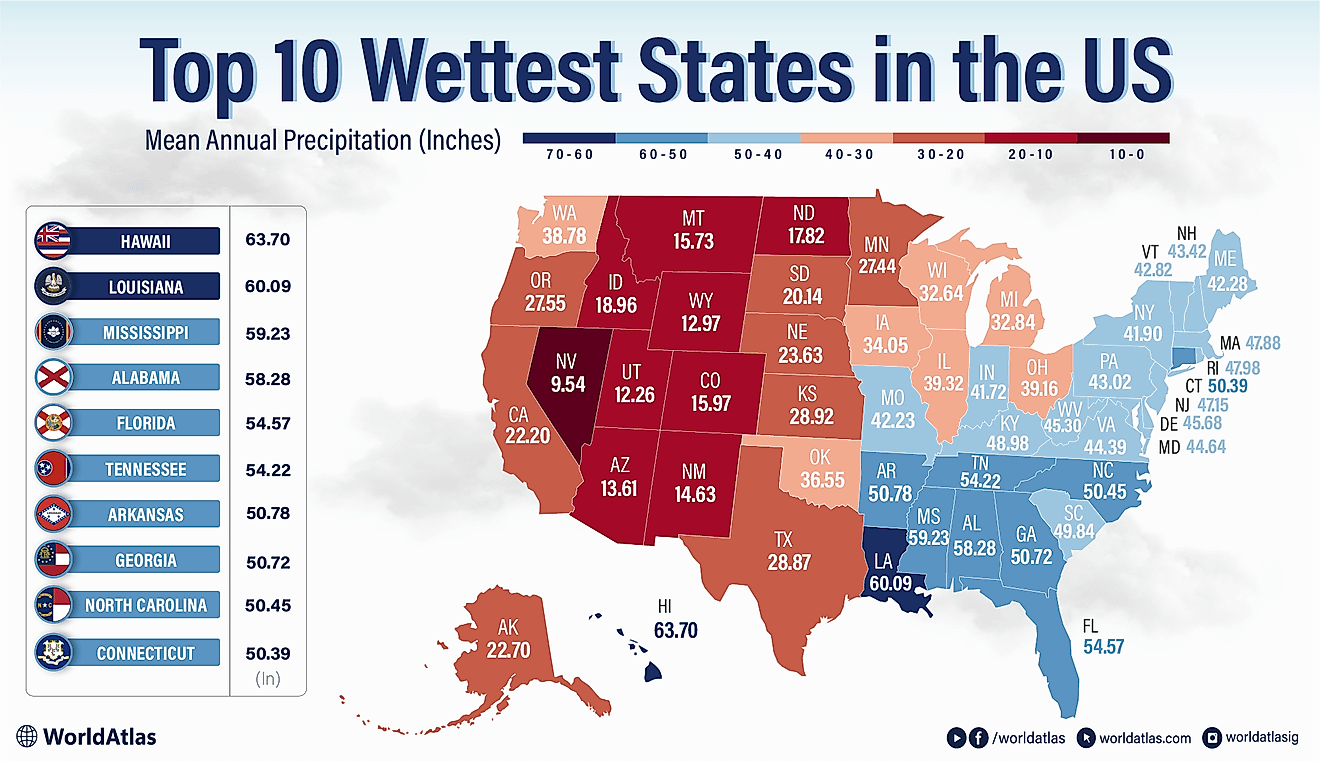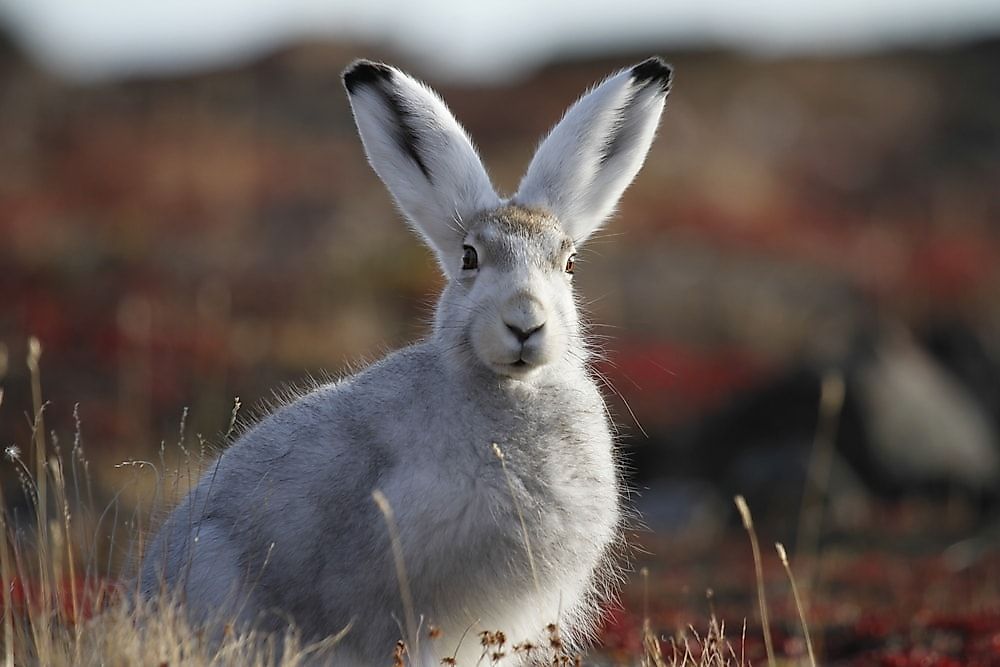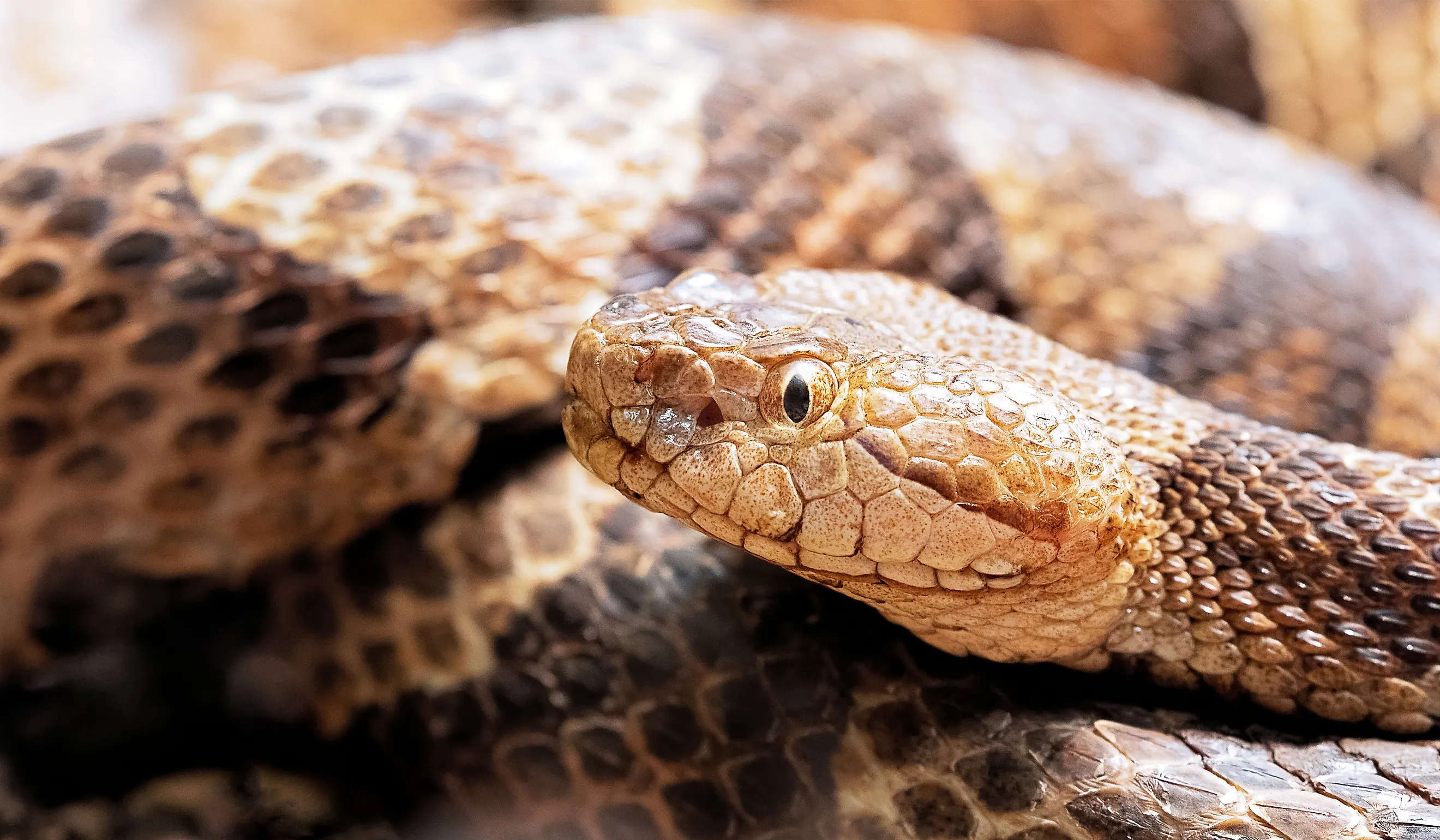
Most Snakes In West Virginia Are Harmless Except Two
West Virginia is located in both the Southern and Mid-Atlantic regions of the United States. It is part of the Appalachian Mountain system, making for a hilly and mountainous terrain with very little level land. Forests cover three-fourths of the state, making an ideal home for a wide range of plants, fungi, and animals, including mammals, birds, fish, amphibians, and reptiles.
There are 23 different species of snakes that call West Virginia home, varying in size from ten inches to over six feet. Out of the 23 different species, only two are venomous: the Timber Rattlesnake (Crotalus Horridus); and, the Northern Copperhead (Agkistrodon contortrix mokasen). Both of these snakes are pit vipers, which is attributed to infrared sensing organs located at the sides of their heads that can detect infrared radiation given off by the body heat of their prey.
Timber Rattlesnake (Crotalus Horridus)
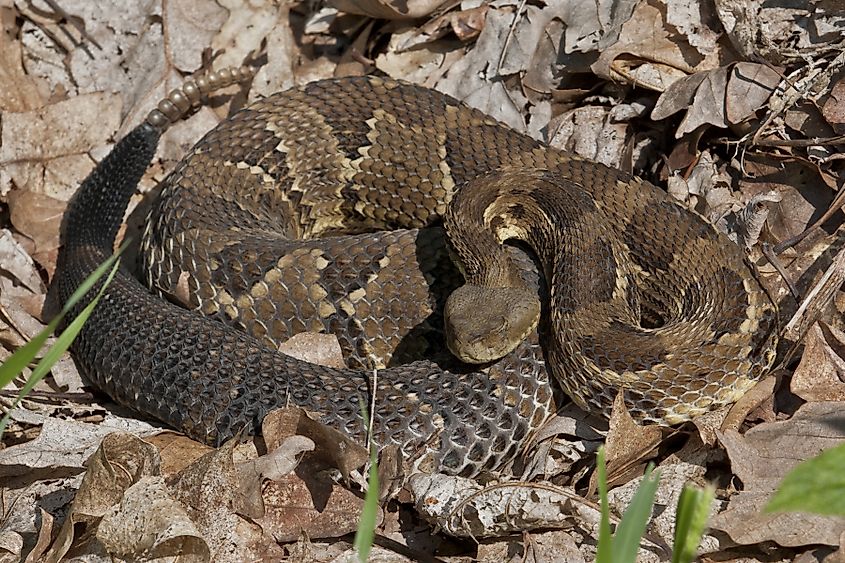
The Timber Rattlesnake, which is West Virginia’s official state reptile, varies in color from golden yellow, grayish olive, and brown, with some snakes even entirely black. Adults of this species range in length between 2.5 and 5 feet. Their neck is narrow, their body plump, and their tail narrows, ending in their infamous rattle.
They have a broad range, from New Hampshire to northern Florida, and on their western edge, southeastern Minnesota to southeastern Texas. Their range once went as far as the Canadian province of Ontario; however, it has not been documented there since 1941.
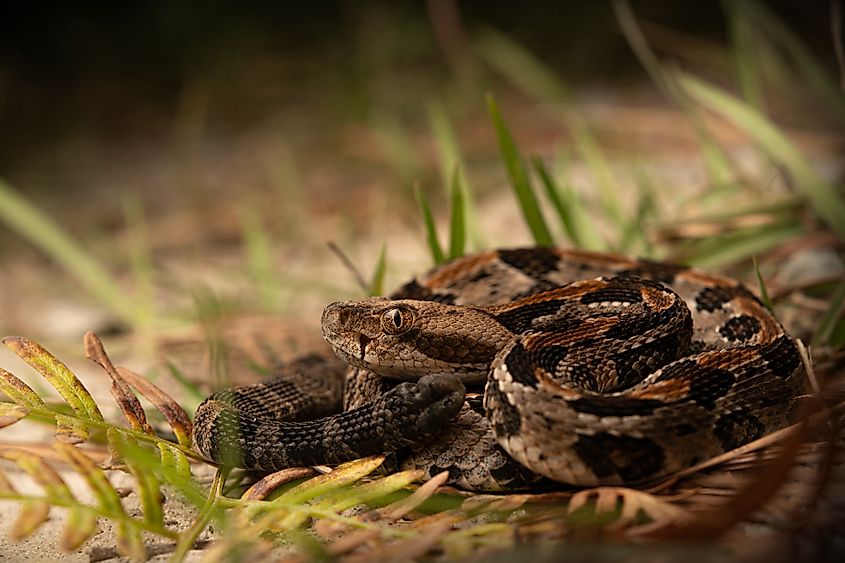
Timber Rattlesnakes inhabit low mountain ridges and forested areas, active between spring and fall, often seen basking on rocky slopes waiting to ambush small mammals and ground-dwelling birds. In the summer, when it is too hot, Timber Rattlesnakes hunt at night using their heat-pit organs, which allow them to detect infrared radiation given off by body heat.
In the summer and late fall, Timber Rattlesnakes gather in rock crevices to communally hibernate in dens and burrows. Mating often occurs during this time, with live young being born between July and October. Timber Rattlesnakes are ovoviviparous, meaning the eggs are fertilized and retained inside the female's body.
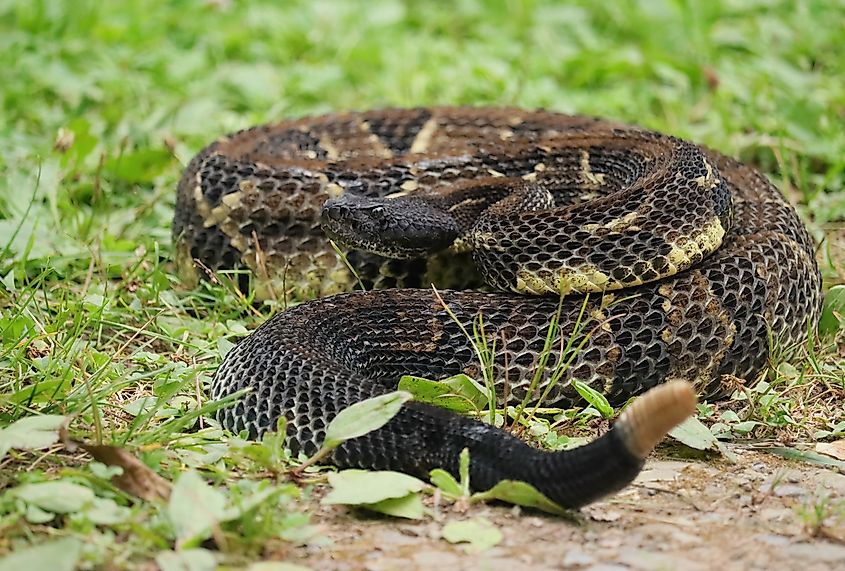
While bites from Timber Rattlesnakes are rare, they are medically significant. The venom is considered a hemotoxin, which destroys tissue to aid in digesting prey items. When they are startled, they often puff themselves up to appear bigger and rattle their tails to make their presence known. Upon further agitation, they may also bluff strike, where they lunge forward without opening their mouths. Since it is costly for a rattlesnake to produce, and they do not consider humans prey items, biting is the very last resort.
Northern Copperhead (Agkistrodon contortrix mokasen)
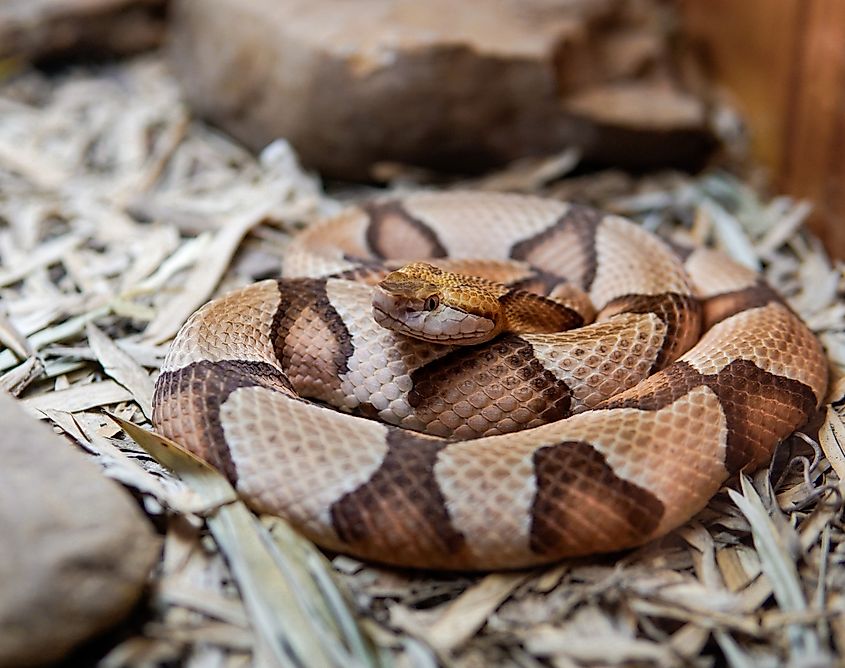
The Northern Copperhead has hourglass banded patterns down its back with a pink belly featuring dark markings. Their bodies are stocky with brown or reddish bands that are wide on the sides and narrow on the back. Young copperheads can be identified by a bright yellow tail tip, which fades gradually until it is lost completely by the age of three or four. Adults of the species generally average between 24 and 37 inches in length.
They are widely distributed across the United States, ranging from Massachusetts southward through the Appalachian Mountains to Georgia, and westward through northern Alabama and northeastern Mississippi. From southern New York, copperheads range west through central Pennsylvania and the southern portions of Ohio, Indiana, and Illinois.
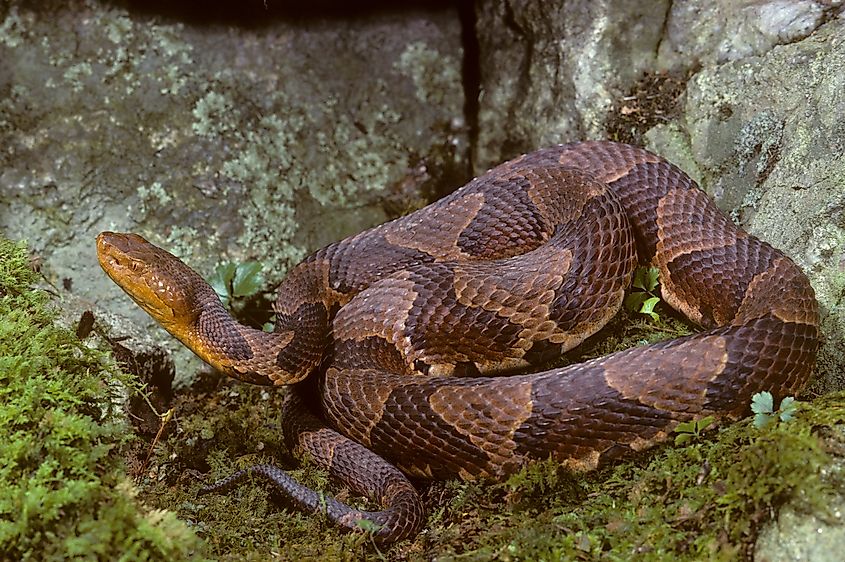
Copperheads occupy a diverse habitat, from terrestrial to semiaquatic, including rocky, forested hillsides and wetlands. They may also be found in meadows - especially if the meadows are bordered by marshes, streams, or swamps. Copperheads will wait motionless amongst leaf litter or under debris until prey emerges.
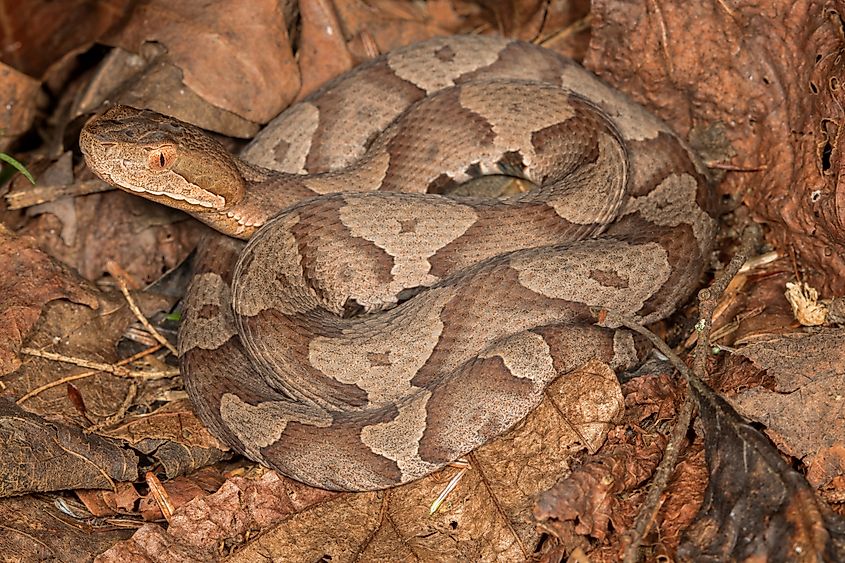
Copperheads are active from April through to October, spending the rest of the year hibernating in dens. As social snakes, they hibernate communally with not just other Copperheads, but other snakes too, including Timber Rattlesnakes and Black Rat Snakes. They often return to the same dead year after year. Copperheads begin mating after they leave their dens in the spring. Males will behave aggressively towards one another and may participate in behavior such as elevating their bodies, swaying side to side, hooking necks, and eventually intertwining their entire body length. Like Timber Rattlesnakes, Copperheads are ovoviviparous, giving birth to live young rather than laying eggs.
While Copperheads are responsible for many snakebites annually, they rarely deliver a fatal bite. Bites can result in necrosis, inability to breathe, circulatory problems, and intense pain. However, Copperheads are characteristically docile and non-aggressive snakes that are more likely to remain still and hide so they may slither away peacefully.
Let Snakes Be
While West Virginia’s two venomous snakes are capable of inflicting harm, it is important to remember that snakes are misunderstood animals and will either use their rattle to bring their presence to your attention or simply remain hidden rather than confront a human. It is important not to disturb snakes, should you encounter them in the wild - especially if you cannot confidently identify them.
On the chance you are close enough to a snake, examine them from a safe distance as they are capable of striking about one-third to one-half of their body length. Many bites occur when people get too close to snakes when they try to pick them up or kill them. Remember: snakes play a crucial role in our ecosystem as a natural rodent and pest control.

